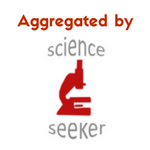
Hongkui Deng fielding questions from the audience at the Till and McCulloch Meetings in Banff, Alberta. Photo: Graham Twomey
>
Set in the beautiful mountain setting of Banff National Park, the first hours of the Till and McCulloch meeting have not disappointed. Our morning plenary began with an excellent historical perspective from Shin-Ichi Nishikawa on the origins of blood stem cells and rolled on through an excellent series of talks on epigenetic regulation and pluripotency. Our morning ended with a speedy presentation from the always-charismatic Ben Paylor on the production of StemCellShorts videos on stem cells, embryonic stem cells, and pluripotent stem cells (final one to be released on Oct 25). To me, the real benefit of the TMM meeting is its size (small) and breadth (wide). The meeting style and content allow stem cell biologists to capture the best work going on in both adult and pluripotent stem cell systems while meeting one on one with the leaders in the field.
From all of the great work being presented, it is difficult to select one to pull out for special mention, but I really felt that Hongkiu Deng warranted such attention. Since the initial discovery of induced pluripotent stem cells (iPS), my single biggest frustration at stem cell conferences has been the dominance of iPS technical advances (mostly marginal ones) on the podium. Yes, the field is incredibly important and yes, there are a lot of people working on it, but the number of talks and posters that fall only on the ears of the highly specialized iPS experts is depressing. This is why Deng’s talk was so good – not only did he break down the reasons for undertaking his research questions, but he also made a conceptual advance in iPS cells alongside the technical advance. The main portion of the study was published in Science earlier this summer.
Through a series of screens to replace individual reprogramming factors (from the original 4 described by Shinya Yamanaka), Deng’s group showed that it wasn’t so much an individual factor that made cellular reprogramming possible, but rather any one of a number of factors that restricted, or permitted, cell fate choice down a particular path. Specifically, his group showed that Oct4 normally drives cell type 1 and represses cell type 2 while Sox2 normally drives cell type 2 and represses cell type 1. They then showed that replacing Oct4 or Sox2 with any of a series of factors that share the same pattern of driving/repressing could achieve the same reprogramming goal.
This discovery formed the basis for the rational design of a series of experiments that tested numerous chemical molecules to drive those same patterns. Charting the failures and successes throughout an incredibly large amount of work, Deng’s group arrived at a combination that could make iPS cells using only small molecules. This is an important advance because chemical molecules are transient, cost-effective, and (generally) reversible, thereby removing many of the concerns of genetic manipulation.
Stay tuned over the next few days for more meeting updates as the week moves on, it looks like an excellent program with exciting sessions on single cell analysis and tissue repair and regeneration.
David Kent
Latest posts by David Kent (see all)
- Breaking down barriers between industry and academia to accelerate gene therapy - August 22, 2023
- Reversing aging: Not just a single system to consider… - August 25, 2021
- Regenerative medicine and COVID-19: The search for a silver lining - August 26, 2020






Comments